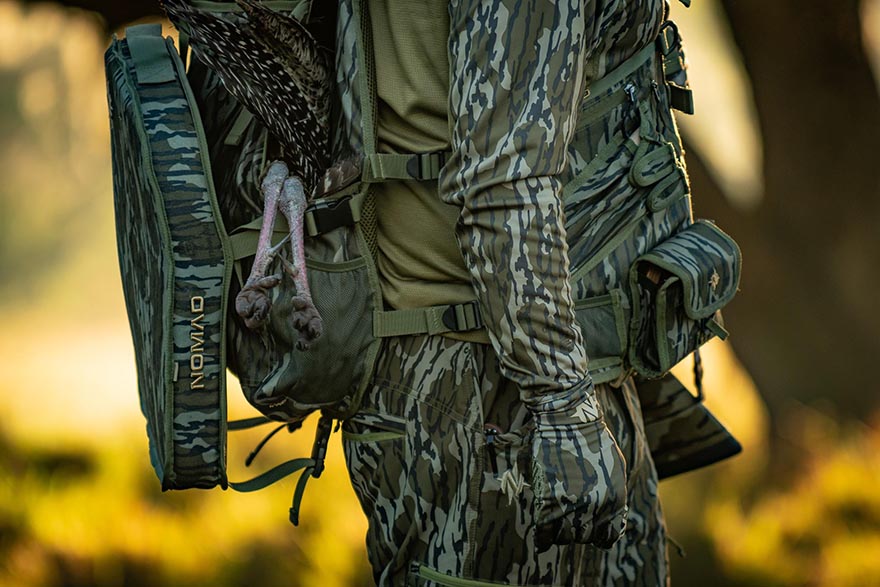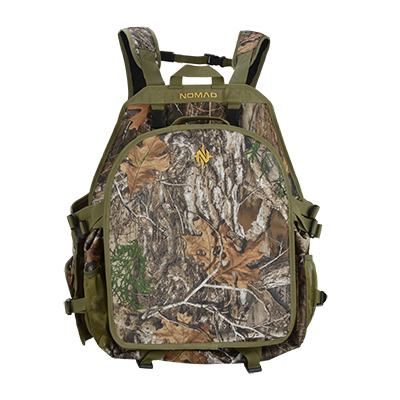There are two types of wild turkeys–the Ocellated of Central America and the American wild turkey. Within the American wild turkey category, there are five different subspecies designated by the National Wild Turkey Federation: Gould’s, Eastern, Merriam’s, Rio Grande and Osceola.
If you’re planning on completing a Grand Slam, which is one of six worldwide hunting competitions, then you will soon be heading out on the trail of the Osceola turkey that resides in Florida.
Each turkey subspecies has a different habitat and daily routines. As with any hunting venture, it’s worth your while to learn the discrepancies between this prey and other turkeys. Here are six expert tips to successfully bag an Osceola tom.
1. Talk Turkey
Eastern turkeys are the biggest of the lot and the most widespread. Their territory includes all states east of the Mississippi River, bordering the western riverbank, and in some parts of the Plains and Eastern Texas.
These turkeys have long beards and brown tips on their tail feathers. Their loud, deep gobble is what you imagine when you think of a wild turkey call.
The Rio Grande spans from Kansas, through Texas and into Northern Mexico. The best way to distinguish them from their brethren is by the tan tips to their feathers and their high-pitched warbly gobble.
Merriam’s reside in the middle of the country–the Rockies and up into the Dakotas, Idaho, Oregon and Washington state. These turkeys display more white than dark in their primaries, and their gobble is similar to the Rios but even more high-pitched and warbly.
The Osceolas are also called the Florida turkey due to their narrow territory. They only roam the central and south parts of the state. They are longer and leaner than the Easterns, although they closely resemble their turkey cousins, and their gobble is almost indistinguishable from that of the Easterns. Their barred markings are darker and have less of a black-white contrast as well.
2. Turkey Needs
There are certain elements that turkeys need in their habitats and knowing about these necessities is vital to a successful hunt. Turkeys need trees to roost in at night, so look for tall trees like white pines or hardwood for turkey roosts.
When winter gives way to spring and greenery starts to appear, love is in the air for the turkeys. Toms want extra room to strut, and they will strut just about anywhere. They want the female turkeys to see them and they want to be able to see any predators.
Osceolas, in particular, are wary about their surroundings, so you may need to change up your tactics and sit still for long periods. For the hunter, this means you need to be prepared with the right turkey hunting essentials, like a turkey vest, which has a ton of storage for turkey calls, extra shells and whatever else you might need on your expedition.
Shop Turkey Hunting Gear
3. Know the Patterns
Turkeys may not be the smartest animal, but they can be very cautious of predators. And Osceolas are notably quiet after they fly down from the roost, so watch where they head.
Oceolas like to live in areas of Florida made up of palmetto thickets, open fields and orange groves. If you can, observe your gobblers in the afternoon and then hunt them in the morning. If you go after them in the afternoon, you may blow the roost.
4. Blind Building
Because of their careful silence, running and gunning may not be the most effective approach to hunting Osceolas. If they mark you, Osceola toms will quietly slip away while you’re jockeying for position.
An excellent tactic for Osceolas is to build a blind. Once you’ve discovered where the birds head after flying down from their roost, make a blind in the late afternoon between their roost and their stomping ground.
If you can, build the blind so that the rising sun will be at your back. After you’ve created the blind, return to it the next morning to surprise the birds and bag a tom.
5. Decoy Spreads
Decoy spreads depend on the season. If it’s early in the mating season, a spread made up of compliant hens and strutting jakes will lure the older toms. If it’s later in the mating season, a lone hen and jake may do the trick.
Especially with Osceolas, it’s essential to let the birds come fully into the spread. Some argue that Osceolas are warier than their cousins, so allowing the birds to strut into the spread will ensure you can bag a tom for your Grand Slam.
6. Prepare
Much of the success of a turkey hunt rides on the days before you leave. Preparation and the right turkey hunting gear can make or break an expedition.
With Osceolas especially, it’s important to don the right kind of camo that keeps you warm, dry and comfortable for those hours of waiting. These guys are cautious and call less than their other feathered brethren, so patience is a must.

The Takeaway
Whether you’re attempting to check off every subspecies on your Grand Slam or just going out there for some non-competitive weekend fun, hunting Osceola turkeys is an excellent experience.
Understanding the difference between these turkeys and their feathery cousins, learning their patterns and having the appropriate gear all lead to a successful hunt.
Nomad outfits you with quality, hunter-tested apparel and gear to make sure that when you’re out in the wild with a tom in your sights, you have everything you need to make a successful shot.



















